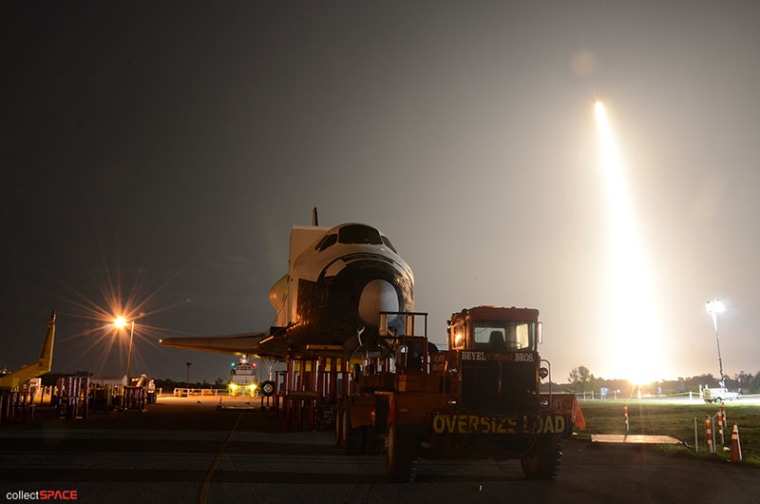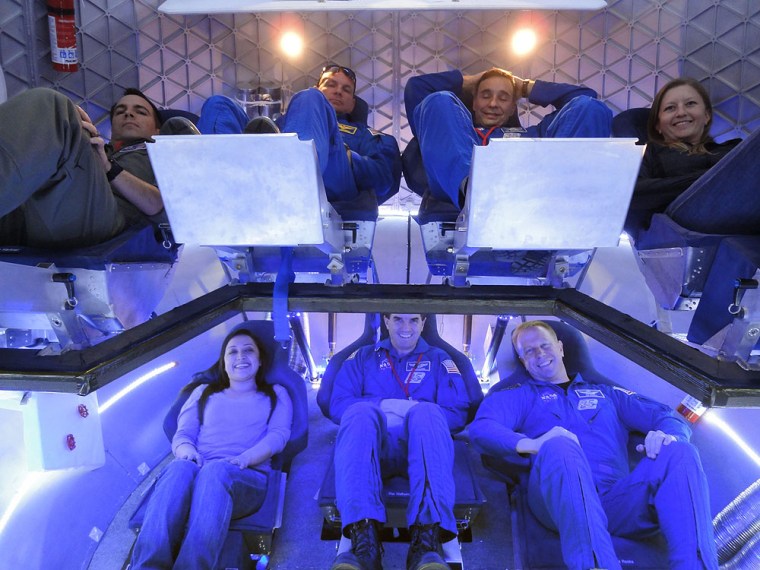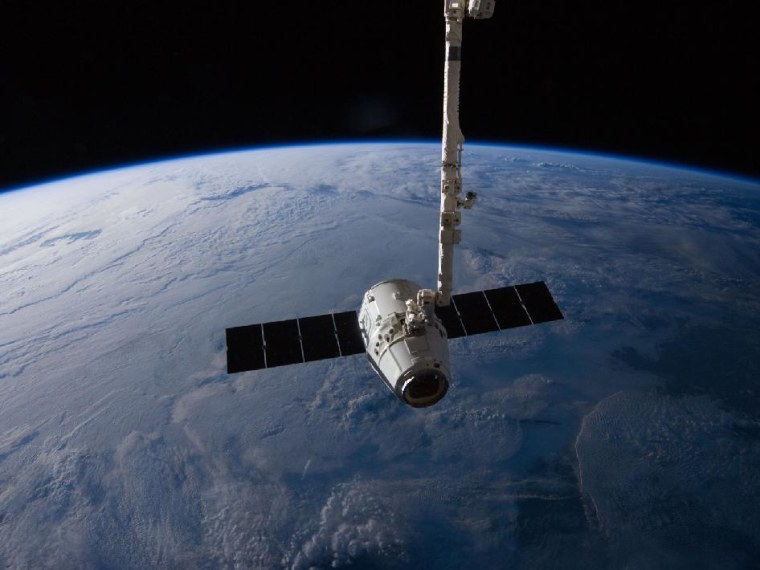NASA is about to make a critical decision regarding a new chapter in American space exploration.
At issue is which two entrants among a field of highly qualified contestants will move ahead as the primary winners into the next phase of the commercial crew competition to replace the space shuttle as America’s means of access to Earth orbit.

This decision is about much more than whose brand name will be emblazoned on the side of a spacecraft. With serious differences between the leading contenders, it is also a referendum on the merits of a new approach to developing and conducting spaceflight operations, one which recently resulted in the first-ever private commercial flight to the International Space Station. This approach stands in contrast to a traditional aerospace establishment which is already firmly in control of NASA’s separate, much larger, slower and vastly more expensive program, the Space Launch System. As a consequence, it holds the potential to shape the future of American space exploration.
With so much at stake, veteran astronauts, industry insiders, lawmakers and even journalists have been weighing in with their opinions as to who should emerge as a winner. There’s been a late push by the aerospace giant Alliant Techsystems, also known as ATK. The company hasn’t won funding for its Liberty launch vehicle in the current phase of the spaceship competition, but it received several billion dollars of funding in a prior life for the now-canceled Ares 1 rocket development program.
The push for Liberty has reinvigorated a long-running debate over the relative merits of “experienced” aerospace companies such as ATK, versus newer entrants such as Space Exploration Technologies Corp., or SpaceX.
The line of reasoning is that as a younger company, founded only a decade ago, SpaceX simply lacks the history to compete with more experienced aerospace contractors. Liberty’s backers argue that human spaceflight is something best left to the grand old names from a better, bolder era, who have seen it all before and know how to get us back.
A different model for space travel
Experience however, can be a two-edged sword — a sword that cuts sharpest when wielded not just for auld lang syne, but instead with skill acquired by applying lessons learned across the broad spectrum of the space era. The most important lesson is that if our ultimate purpose is to explore a solar system that is more diverse and interesting than we once thought, we need a different model for doing so. b
Dec. 7, 2012, will mark the 40th anniversary of the flight of Apollo 17. That was the last time the United States ever launched an astronaut beyond Earth orbit. The reason why the operational era of human exploration beyond Earth orbit lasted a mere three and a half years, from July 1969 to December 1972, is that early in the Space Age, and continuing with the space shuttle, the nation tied itself to an infrastructure and a way of doing business that was too expensive to sustain.
NASA acknowledged this reality in 2006, even as it was pursuing its plan to send astronauts back to the moon — known as Project Constellation or “Apollo on Steroids” — by establishing the Commercial Orbital Transportation Services program. The purpose of the COTS program was to see if there was a better, more sustainable model for achieving access to space by forgoing the traditional approach of top-down, sole-source , cost-plus contracting — and instead harnessing the innovation and drive of private industry while still maintaining a close partnership with NASA.
After plowing nearly $8 billion into the Ares 1 booster program, Project Constellation did in fact prove too expensive to sustain. Instead, it was the COTS approach for cargo delivery to the space station that became the basis for NASA’s commercial crew program.
Success for SpaceX
SpaceX’s first demonstration cargo flight to the space station was accomplished in May as part of the COTS program. That flight took longer than expected, but the results were well worth NASA’s time and money. Thanks to its investment of $396 million, plus a great deal of advice, NASA has made it possible for SpaceX to produce not just a new launch vehicle but something much more profound: a new space transportation system consisting of the Falcon 9 launch vehicle, the recoverable and reusable Dragon spacecraft, and the infrastructure to support those spacecraft.
For comparison’s sake, the cost to NASA for doing this was less than what the space agency spent on one suborbital test launch of the Ares 1-X booster in 2009. It was less than NASA has spent on the development of its deep-space Orion crew capsule in the first half of this year alone.
Now SpaceX has a contract to launch 12 cargo flights to the space station at a cost to the American taxpayer of about $133 million per flight — putting America back in the orbital transport business. The SpaceX Falcon-Dragon transportation system arguably represents the best investment NASA has ever made. In light of that success, a failure to include the company in the top two for NASA’s commercial crew program would signal an almost unfathomable retreat, unworthy of the best of American ingenuity.
The stunningly low-cost and expansive nature of the Falcon-Dragon system represents much more than a rare bargain for taxpayers, in an era when most such stories have a very different ending. It offers indisputable proof that a new approach to space transportation can work far more effectively than the old ways. It’s absolutely vital to keep the company and the space transport system which has pioneered this path in the vanguard.
Safety first
There are other reasons to support the SpaceX approach, with safety foremost among them. The launch vehicle was designed from the outset to exceed NASA’s crew safety standards. For instance, the spacecraft systems are tested to 140 percent of the maximum expected loads, rather than the 125 percent that NASA calls for. SpaceX has developed a launch pad release system that keeps the rocket safely on the ground until all first-stage engines are at full power and trending safely. Once released, the Falcon 9 can suffer a first-stage engine failure and still make it safely to orbit.

Sitting atop the Falcon 9 booster, the crewed version of SpaceX’s flight-proven Dragon spacecraft incorporates a launch escape system built into sidewall of the crew vessel itself, allowing for a safe escape path at any point in flight.
The ATK Liberty proposal, by contrast, is based on the 40-year-old solid rocket architecture which doomed Challenger and offers none of these critical features. No amount of marketing can obscure the fact that once ignition occurs, solid rocket boosters — unlike liquid-fueled rockets — cannot be turned off. Any launch vehicle can have a bad day; the problem with solid boosters is the tendency to turn a bad day into something much worse.
Another argument focuses on experience. SpaceX is the only entrant in the competition that has already flown to the space station with the complete system being offered. Furthermore, SpaceX is contractually obligated to conduct 12 more flights in the coming years as part of its separate, commercial resupply contract. Consequently, by the time NASA astronauts begin boarding any new American launch system for a trip to the orbiting outpost, SpaceX will already have flown the rout many times over. That means the entire system — including Falcon 9, Dragon, ground operations, tracking, space station rendezvous and berthing, as well as the interplay between the NASA and SpaceX flight control teams — will be well proven. It will be, dare we say, an experienced system.
American competitiveness
Yet another issue for consideration has to do with promoting American industrial competitiveness. In spite of the “experience” that veteran aerospace companies bring to the table for commercial crew, one of the items sadly missing from the menu is a strictly American launch vehicle. United Launch Alliance’s Atlas 5 rocket, though built in Decatur, Ala., is in fact powered by a single Russian main engine, the RD-180, built in a factory outside Moscow. Outsourcing the heart of the rocket, the engine which drives it, may have saved a great deal of money. But it has also contributed to a gaping hole in the U.S. launch industrial base, only now being countered by SpaceX and its Merlin main engine, which is 100 percent designed and built in the U.S.
While the ATK Liberty does employ an American first stage, albeit based on a solid rocket booster, the second stage is entirely European. If the Falcon 9 is left out of the mix, the United States will still lack a truly indigenous crew launch capacity to low Earth orbit.
The Falcon 9 represents the only all-American launch solution on the table, designed and built in California, tested in Texas and launched in Florida. For a U.S. workforce desperate for jobs, and a country looking for something to celebrate, it doesn’t get much better than that.
It may be tempting to cast the decision regarding the next era in American spaceflight in terms of the glory days of American space exploration, and advocate a return to the waiting arms of companies that helped make those glory days. But there’s a reason that the only "Glory Days" we hear about today are coming from Bruce Springsteen: The cost basis for those past-generation launch systems is unsustainable. NASA understands this, and that’s why the agency has resisted recent pressure to "down select" to a single winner.

Speaking at a news conference in May, former shuttle astronaut Brent Jett, who is now deputy manager of NASA’s Commercial Crew Program, said the program was set up to reduce costs by fostering competition. The lack of competition, he said, explains “why a system costs $8 billion to build.”
The past and the future
Although SpaceX has plenty of under-30 employees, the company also employs lots of talented aerospace veterans who have seen it all before and know how to eliminate waste to produce a system that’s safe, yet cost-effective. In this, SpaceX has received wise counsel from NASA, who after years of circling in low Earth orbit yearns to begin exploring again. To assert that SpaceX is not up to the task of extending the same lessons to crewed spaceflight is to suggest that neither is the agency doing the advising.
The exploration of space, more so than almost any human endeavor, is an inherently forward-looking enterprise. While the immediate issue is access to low Earth orbit, the implications reach much farther. The fundamental challenge of space exploration is as much financial as it is technological. Substantially reducing the cost of reaching orbit, a goal unsuccessfully pursued by the shuttle program, remains the key to unlocking the solar system.
Even as NASA officials weigh their decision, one company at the forefront of the space frontier is investing its own resources to build what all parties agree is necessary to establishing a permanent future in space: a fully reusable space transportation system. That company is SpaceX. Soon it will begin testing the Grasshopper, a reusable first stage based on the same Falcon 9 launch vehicle that is at the core of company’s commercial crew proposal. While it is too early to tell if the test program will be successful, the effort itself is representative of what space exploration should be about.
If the accomplishments of the Apollo program are to have lasting significance, then somebody, somewhere is going to have to politely bypass the “experienced” wisdom that says it can’t be done — and develop the technology to make fully reusable launch vehicles a reality. For the moment, at least, that company is SpaceX, the launch vehicle is the Falcon 9, and NASA’s commercial crew competition represents an important step along the way.
Counterpoint: 'Spaceflight in the 20-teens':
- Part 1: Space needs a place on to-do list
- Part 2: It's decision time for future spaceflight
- Part 3: Handicapping the commercial space race
- Part 4: Neil Armstrong still chooses to go to the moon
- Part 5: Small steps toward a giant leap in space
- Follow the money in the commercial space race
Stewart Money is a freelance writer focusing on space transportation issues. He is currently working on a book about SpaceX and the development of the Falcon 9 launch vehicle and Dragon spacecraft. Money's email address is
